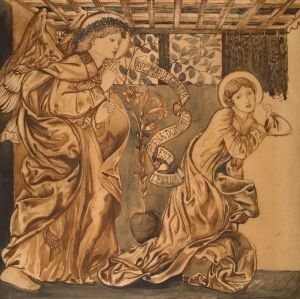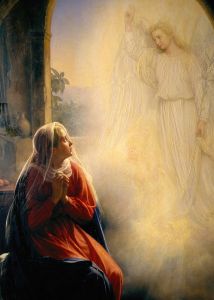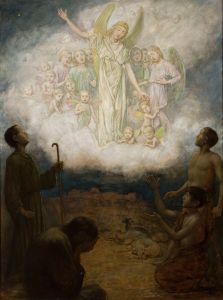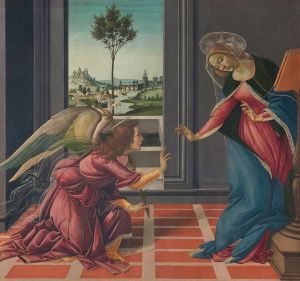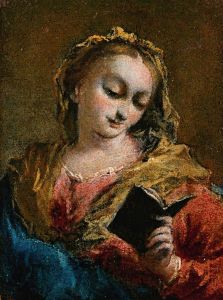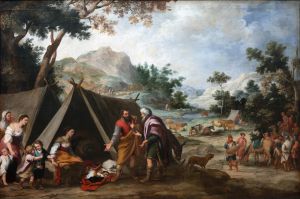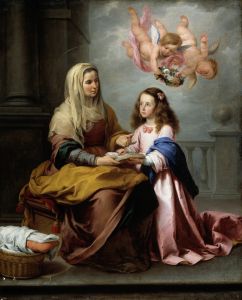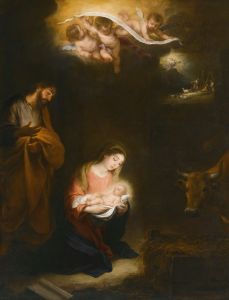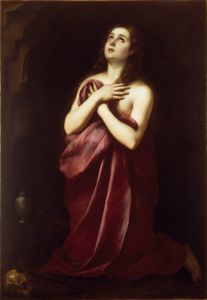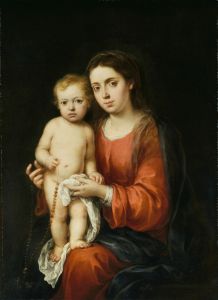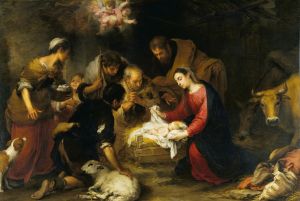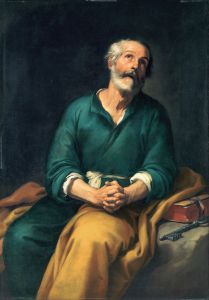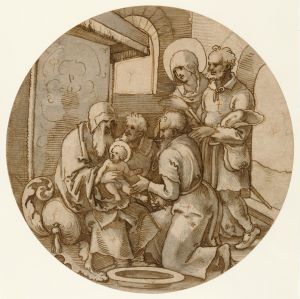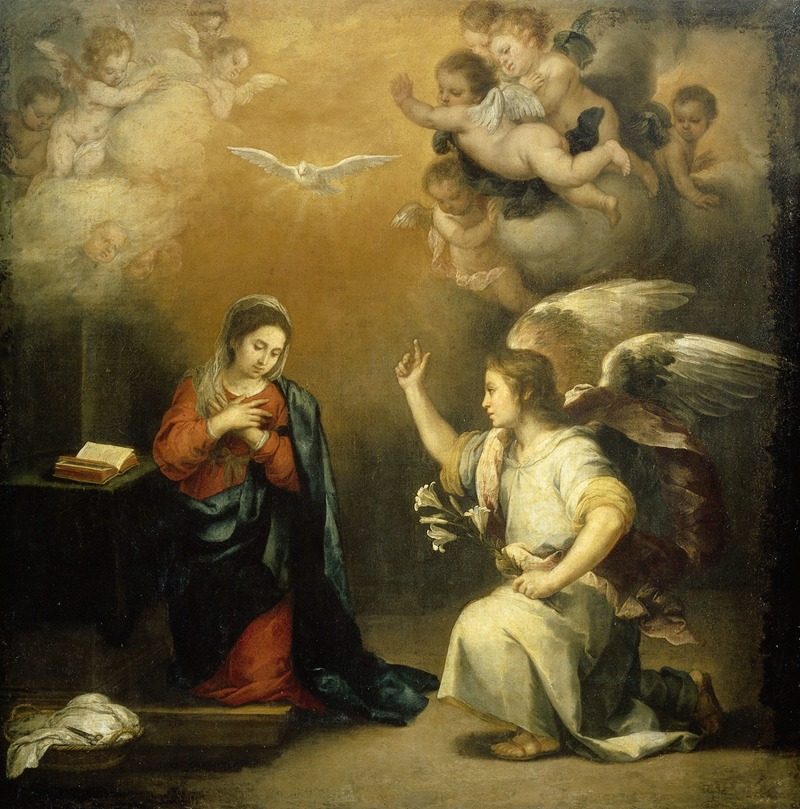
Annunciation to the Virgin
A hand-painted replica of Bartolomé Estebán Murillo’s masterpiece Annunciation to the Virgin, meticulously crafted by professional artists to capture the true essence of the original. Each piece is created with museum-quality canvas and rare mineral pigments, carefully painted by experienced artists with delicate brushstrokes and rich, layered colors to perfectly recreate the texture of the original artwork. Unlike machine-printed reproductions, this hand-painted version brings the painting to life, infused with the artist’s emotions and skill in every stroke. Whether for personal collection or home decoration, it instantly elevates the artistic atmosphere of any space.
Bartolomé Estebán Murillo, a prominent Spanish Baroque painter, created the artwork "Annunciation to the Virgin" around the mid-17th century. Murillo is renowned for his religious compositions, and this painting is a quintessential example of his ability to convey spiritual themes with emotional depth and technical skill.
"Annunciation to the Virgin" depicts the biblical scene of the Annunciation, where the Archangel Gabriel announces to the Virgin Mary that she will conceive and become the mother of Jesus Christ, the Son of God. This momentous event is a central theme in Christian art, and Murillo's interpretation is celebrated for its serene and tender portrayal.
In the painting, the Virgin Mary is typically shown in a humble and devout posture, often kneeling or seated, with an expression of awe and acceptance. The Archangel Gabriel is depicted with a sense of divine grace, often holding a lily, which symbolizes Mary's purity. The Holy Spirit, represented by a dove, is usually present, signifying the divine intervention in the conception of Jesus.
Murillo's use of light and color in "Annunciation to the Virgin" is masterful. He employs a soft, diffused light that enhances the ethereal quality of the scene. The delicate interplay of light and shadow adds a three-dimensional effect to the figures, creating a sense of depth and realism. The color palette is typically warm and harmonious, with rich blues and reds that draw the viewer's eye to the central figures of Mary and Gabriel.
The composition of the painting is carefully balanced, with the figures arranged in a way that guides the viewer's gaze through the scene. Murillo's attention to detail is evident in the intricate rendering of the fabrics, the delicate features of the figures, and the subtle expressions that convey the emotional gravity of the moment.
Murillo's "Annunciation to the Virgin" reflects his deep religious conviction and his ability to infuse his works with a sense of piety and devotion. His paintings were highly sought after during his lifetime, and he became one of the leading artists in Seville, Spain. His influence extended beyond his native country, and his works were admired and collected throughout Europe.
The painting is housed in the Museo del Prado in Madrid, Spain, which holds one of the most extensive collections of Murillo's works. The museum's collection provides a comprehensive overview of Murillo's artistic development and his contributions to the Baroque movement.
Murillo's "Annunciation to the Virgin" remains a significant work in the history of art, exemplifying the Baroque era's emphasis on emotional expression, dramatic use of light, and the portrayal of religious themes with a sense of immediacy and intimacy. The painting continues to be studied and admired for its artistic excellence and its ability to convey the profound spiritual message of the Annunciation.





